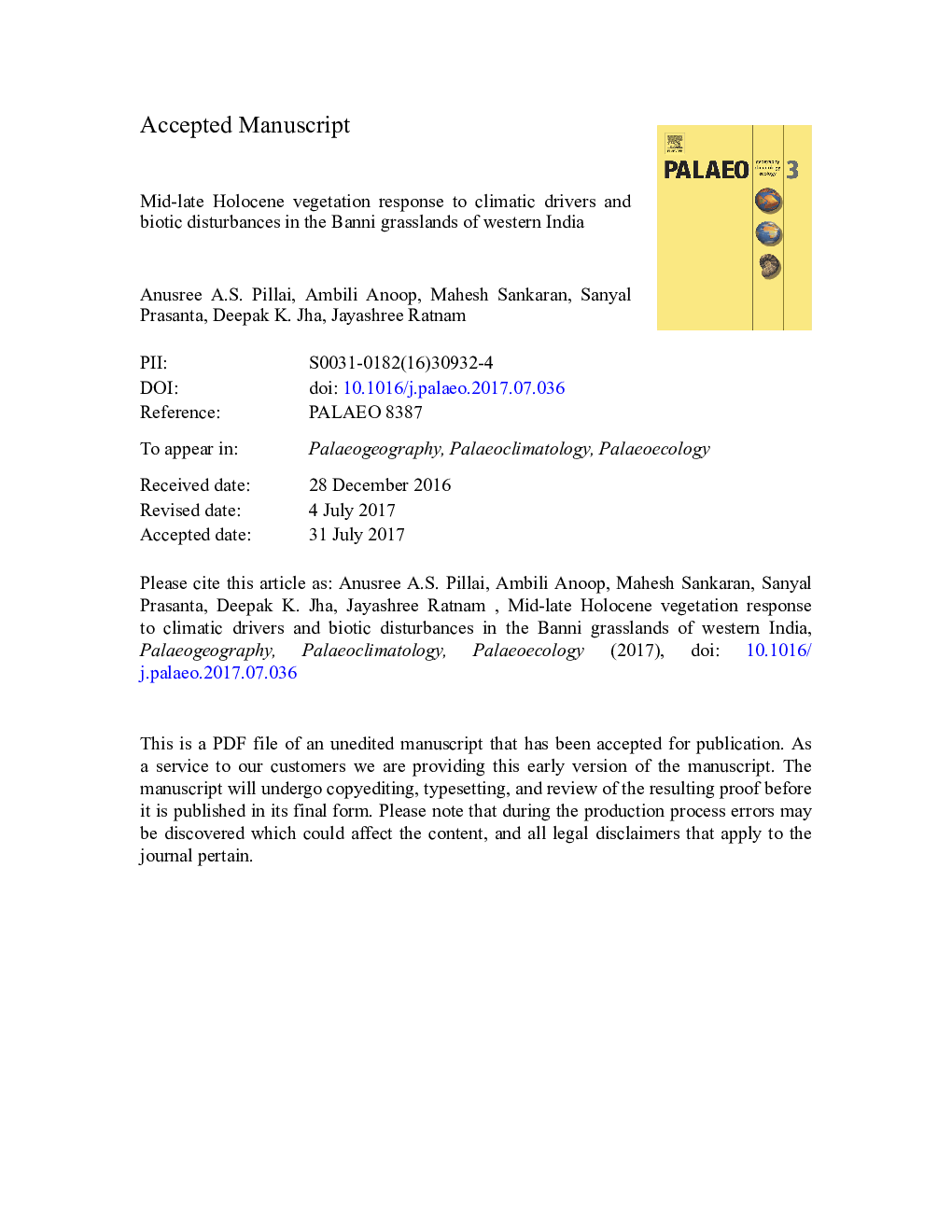| کد مقاله | کد نشریه | سال انتشار | مقاله انگلیسی | نسخه تمام متن |
|---|---|---|---|---|
| 8868730 | 1622107 | 2017 | 47 صفحه PDF | دانلود رایگان |
عنوان انگلیسی مقاله ISI
Mid-late Holocene vegetation response to climatic drivers and biotic disturbances in the Banni grasslands of western India
ترجمه فارسی عنوان
واکنش گیاهخوار نیمه هادی به رانندگان آب و هوایی و اختلالات زیستی در مراتع بنی غربی هند
دانلود مقاله + سفارش ترجمه
دانلود مقاله ISI انگلیسی
رایگان برای ایرانیان
کلمات کلیدی
چمنزارهای گرمسیری، زغال چوبی، اسپور قارچ کبد، ایزوتوپ، موزون پالئواکولوژی،
موضوعات مرتبط
مهندسی و علوم پایه
علوم زمین و سیارات
فرآیندهای سطح زمین
چکیده انگلیسی
Tropical grasslands and savannas are globally extensive, and are of significant environmental, economic, and ecological importance. These ecosystems are anticipated to be particularly sensitive to future changes in climate, and understanding how these systems have responded to climatic changes in the past can provide us with insights into their potential responses to future global change. In this study, the temporal dynamics of C3-C4 vegetation changes in response to changes in moisture availability, local fire events and changing levels of herbivory in a summer-rainfall region of Western India are reconstructed for the past ~ 4600 cal yr BP. Paleodata such as stable carbon isotope of bulk organic matter (δ13Corg), oxygen isotope from carbonate shells (δ18Oshell), macro-charcoal and herbivore dung fungal spores are reported from the retrieved cores of two wetland sites located in the Banni grasslands of Western India. Results show that vegetation in the Banni was composed mostly of C3 vegetation from ~ 4600 to ~ 2500 cal yr BP, after which there was a decline in C3 vegetation. From the late-Holocene to the present, there was a mix of both C3 and C4 vegetation, with C4 grasses being more abundant in the ecosystem. These shifts were coincident with rainfall changes from more mesic conditions during ~ 4600 to ~ 2500 cal yr BP to more arid conditions towards the present as indicated by δ18Oshell isotope data. The period of increase in C4 vegetation also coincides with a period of increased biotic disturbances in the ecosystem, particularly fire. Given the current scenarios of global warming, recurrent drought events and increased anthropogenic use of similar ecosystems, such studies can provide us insights into potential future trajectories of these ecosystems.
ناشر
Database: Elsevier - ScienceDirect (ساینس دایرکت)
Journal: Palaeogeography, Palaeoclimatology, Palaeoecology - Volume 485, 1 November 2017, Pages 869-878
Journal: Palaeogeography, Palaeoclimatology, Palaeoecology - Volume 485, 1 November 2017, Pages 869-878
نویسندگان
Anusree A.S. Pillai, Ambili Anoop, Mahesh Sankaran, Prasanta Sanyal, Deepak K. Jha, Jayashree Ratnam,
